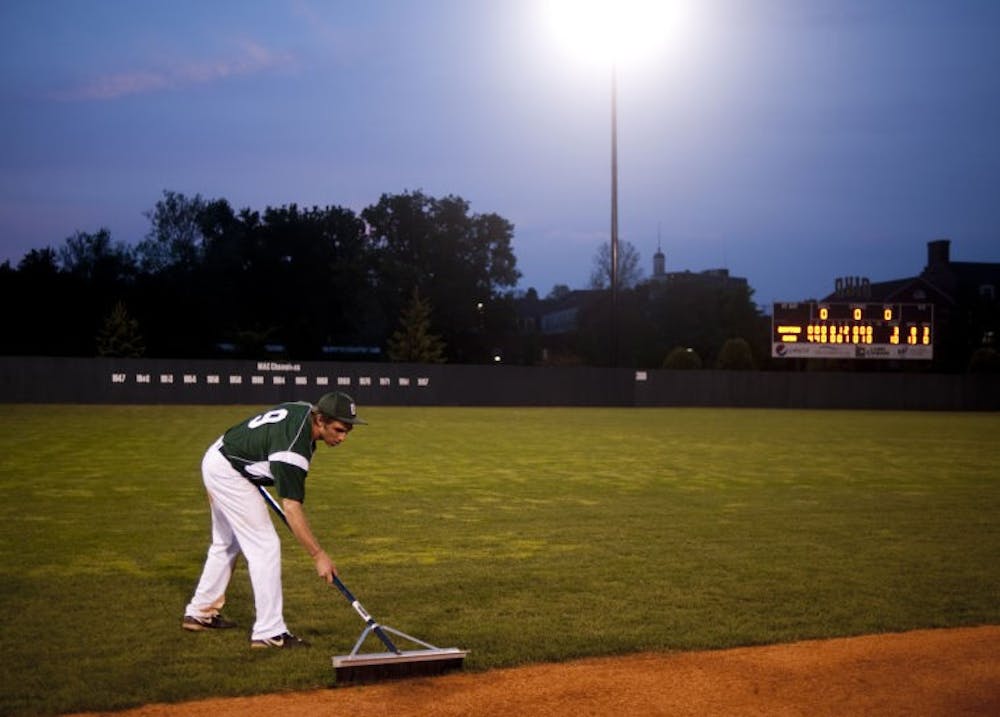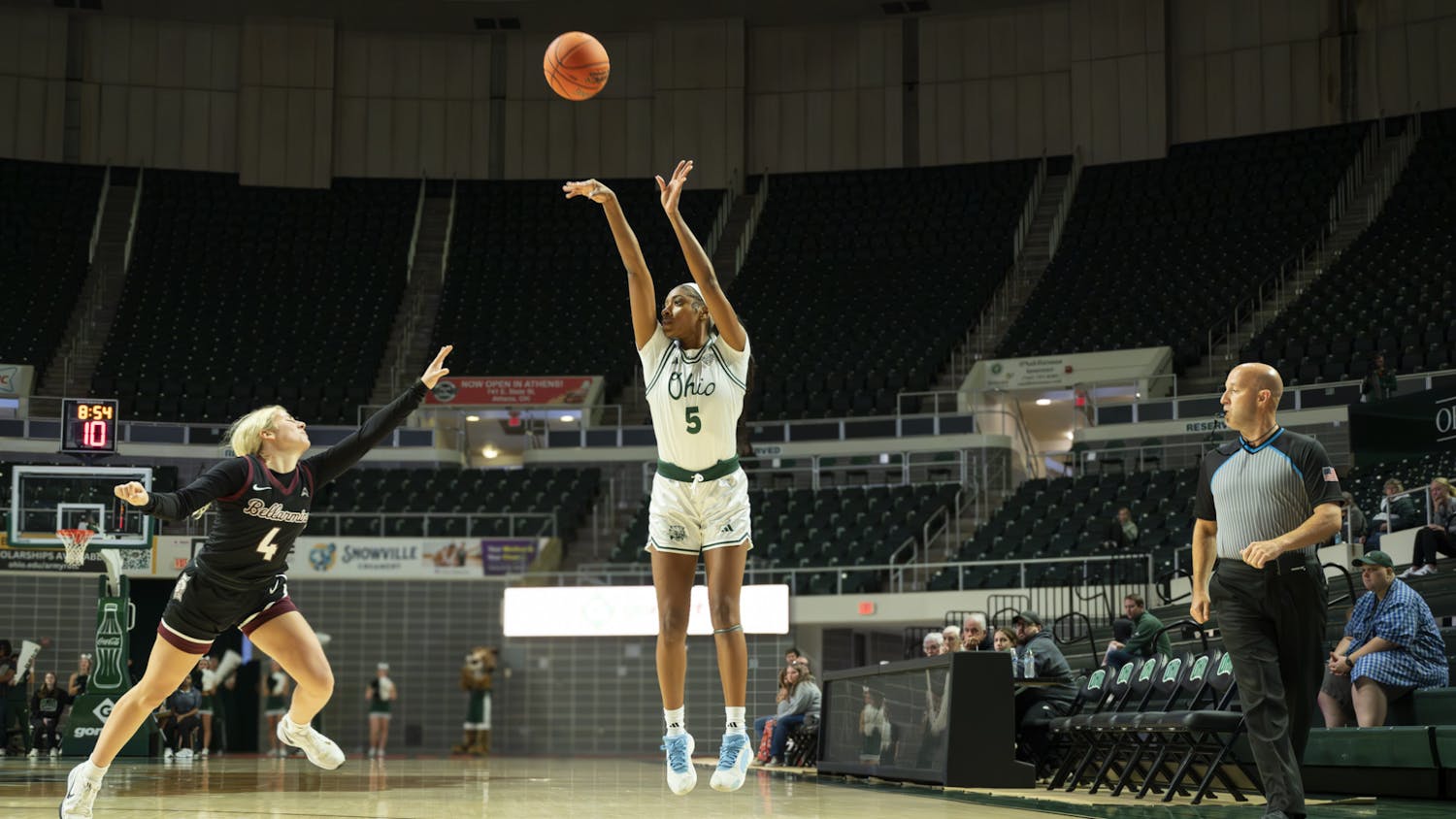For more photos, video and quotes from players about field work, click here.
Late one Sunday night in April, hours after the Bobcats completed a road series in Bowling Green, the lights of Bob Wren Stadium flickered on.
It was past midnight, and the team had just returned from a 6-3 loss to the Falcons. But, forecasts called for rain the next day, so instead of heading to their beds, the players and coaches went to the ballpark and unpacked the tarp in the hope that the field might be playable for Tuesday’s game against Youngstown State.
After a few minutes of getting organized, more than two-dozen players formed a line and grabbed a piece of the tarp, walking in unison until it covered the entire infield.
The whole process, which the Bobcats have repeated several times this season, takes about 20 minutes, coach Joe Carbone said.
On a professional team, such work would be delegated to the grounds crew. But not for the Bobcats.
Baseball and softball are the only programs in the country that take care of their facility,” Carbone said. “You don’t see football players doing anything to the field, do you? You don’t see basketball players sweeping up the gym.”
At Ohio, like most other college softball and baseball teams, the players double as field maintenance workers before and after practices and games.
The first baseman becomes a dirt-tamper. Relief pitchers turn into hose-sprayers. The center fielder? Grass-brusher. And there are always enough rakes to go around.
The list, which can be found on a clipboard inside the dugout, goes on and on.
It’s all in the name of keeping the stadium in professional shape day after day.
“That’s our grounds crew,” Carbone said. “I tell the guys if they never learn anything else at Ohio University, you can at least have a chance to be on the grounds crew of some minor-league or Major League team.”
At the end of every Ohio home game, another ritual begins. After the players huddle in the outfield with Carbone, they quickly make their way past the fence by third base and grab an assortment of rakes, brushes, tampers and hoses.
Tasks are delegated to players by position. So outfielders dig dirt out from where the grass meets the infield, catchers take care of the backstop and home plate area, and pitchers work on the mounds on the field and in bullpens.
Of course, the players have some help. Maintenance workers employed by the university draw chalk lines, yank weeds and mow the grass.
But, the responsibility of what Carbone calls “putting the field to bed” falls on the team.
“So we have to fill in the holes,” Carbone said. “We have to put clay in the home plate areas. We have to drag the field. We sweep the dirt off the edge of the grass, or else you’ll get lips and it’ll be curvy. Everybody’s got field duty.”
On the first day of fall practice, Carbone reviews every aspect of field maintenance with the entire team. The players’ familiarity only grows after that, to the point at which they’re as likely to be seen holding a rake as a bat.
“It’s almost become kind of a running joke how much we work on the field,” sophomore Tyler Backstrom said. “Sometimes, it seems like we work on the field more than we actually practice.
“But it’s all worth it for this beautiful field, this beautiful facility here,” he said.
nm256306@ohiou.edu
@ThePostSports






